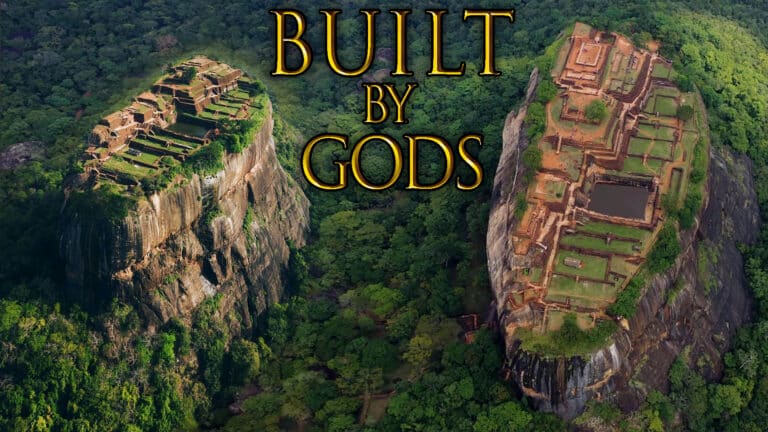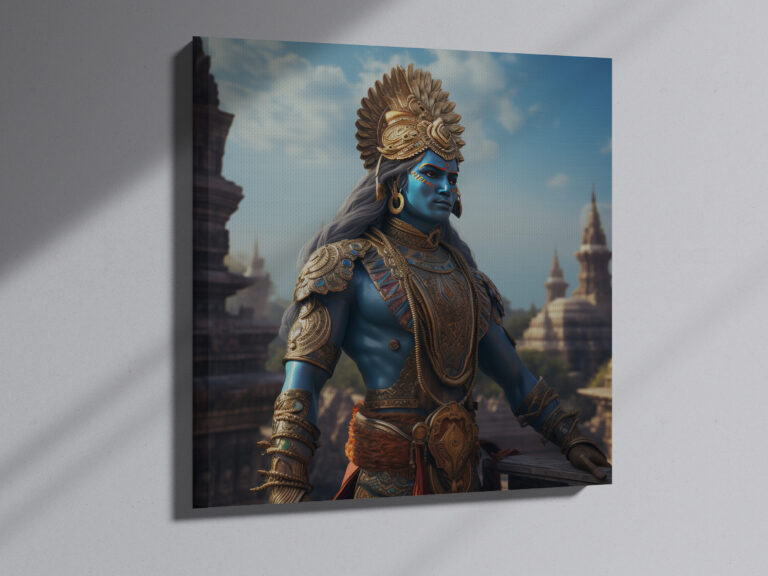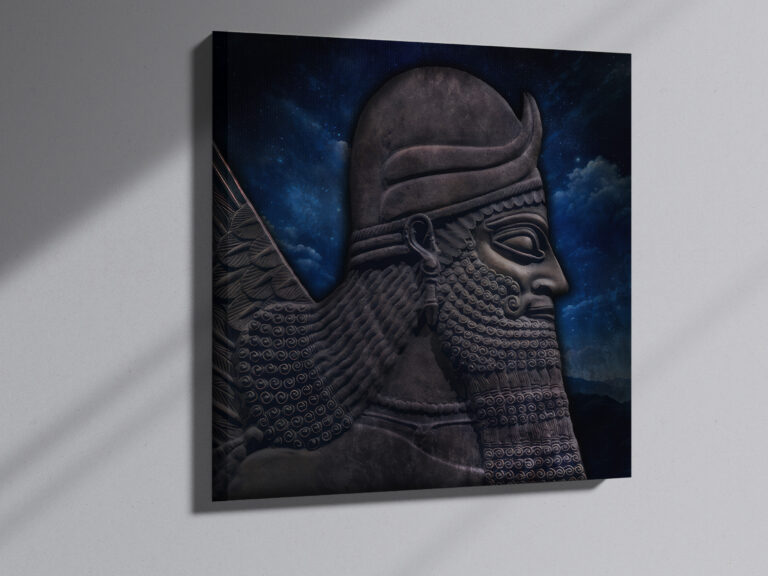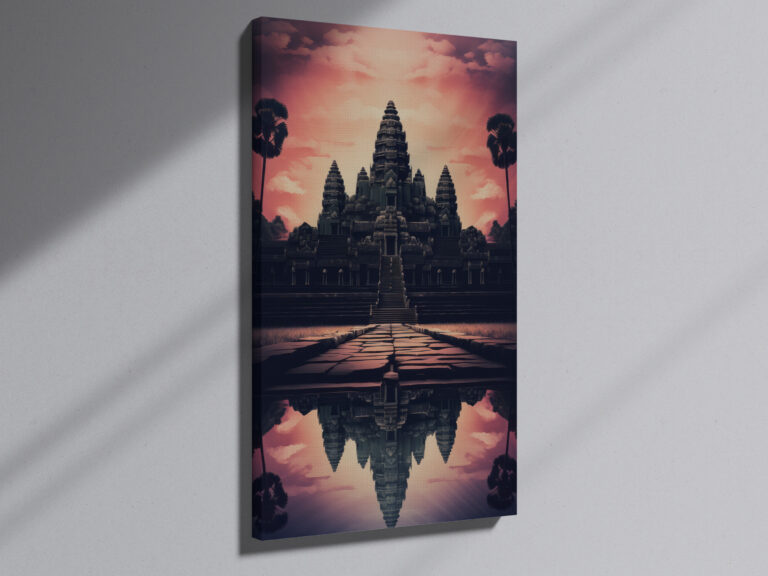Stories of remarkable capabilities attributed to the deities of Hindu mythology have echoed through the ages, leaving an indelible mark on the cultural tapestry of India. These narratives of divine feats, often shrouded in myth and legend, have transcended time and continue to intrigue us to this day. But what if these tales, these ancient sagas of gods and their incredible prowess, were not mere myths but fragments of a forgotten history?
Nestled just south of the Indian subcontinent, within the enchanting embrace of the Indian Ocean, lies the resplendent island nation of Sri Lanka. Known for its breathtaking landscapes, eclectic culture, and a wealth of UNESCO World Heritage Sites, Sri Lanka holds a treasure trove of historical wonders. Among these, one destination stands out in particular, captivating the hearts and minds of travelers and historians alike: Sigiriya.
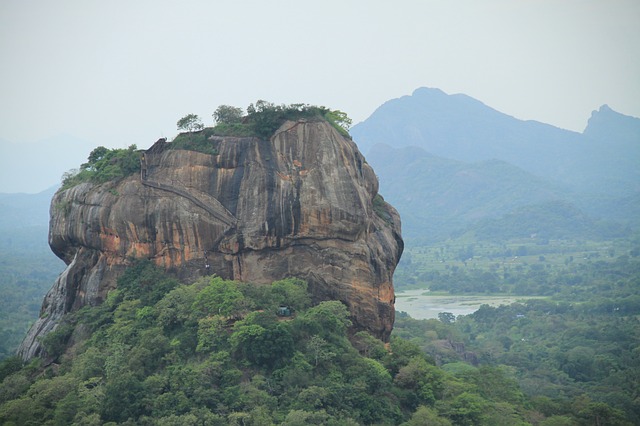
Often hailed as the “8th wonder of the world,” Sigiriya is a place of mystique and grandeur. It is crowned by a monolithic rock that soars 650 feet above the town of Dambulla in the Matale District of Sri Lanka. Each day, Sigiriya draws thousands of eager tourists, its magnetic allure strengthened by its UNESCO World Heritage Site status since 1982. Yet, as tourists gaze upon this colossal rock with its unnaturally flat summit, they can’t help but wonder: Could there be more to Sigiriya’s story than meets the eye?
According to modern archaeologists, the earliest human settlement atop Sigiriya was the Lion’s Fortress, constructed in the 5th century AD. A majority of the site’s palaces and its astonishing granite water tank, a testament to ancient engineering, are credited to the rule of King Kashyapa. But what if Sigiriya’s history is far more ancient and intricate than conventional archaeology suggests? What if it conceals secrets dating back to a time when gods and celestial beings walked the earth?
Intriguingly, the locals of Sigiriya’s surrounding areas hold steadfast to a belief that challenges the conventional narrative. They speak of an ancient Hindu god, Ravana, and his celestial kin, the Asura, who are said to have shaped this majestic site. Legends handed down through generations suggest that Sigiriya was more than just a fortress; it was the palace of Ravana, an ancient God-King of Sri Lanka. This mythic tale proposes that Sigiriya’s colossal constructions, its colossal granite tank, and its perplexing engineering may predate King Kashyapa by millennia.
In one of our recent articles, we discussed in detail the magnificent Rama Setu – an ancient bridge built between India and Sri Lanka by the god Rama, who waged war against Ravana. There, we provided much evidence supporting the belief that Rama Setu was indeed an artificial bridge, built thousands of years ago, by unknown beings. In these Hindu epics, it is said that Ravana ruled Sri Lanka from his palace in Sigiriya. And that the palace was destroyed after the war with Rama.
Is it possible that what we see today in Sigiriya, is the remains of the ruined palace of Ravana?
If the stories about Rama Setu turned out to be real historical accounts, is it possible that the stories about Sigiriya were also real? And could Sigiriya have been used by ancient civilizations and perhaps even by the Hindu deities, thousands of years before King Kasappa built his fortress there?
As we embark on this journey to unravel the mysteries of Sigiriya, we invite you to suspend disbelief and delve into a realm where the lines between myth and history blur. Could Sigiriya indeed be the relic of an advanced, prehistoric civilization? Were its builders blessed with a knowledge beyond our comprehension? Join us as we explore the enigma of Sigiriya, where gods, legends, and ancient engineering converge to challenge the very essence of history itself.
Ancient Habitation of Sigiriya
The area surrounding Sigiriya shows signs of human habitation stretching back to the Mesolithic period some 5000 years ago. There is also evidence of the various rock shelters and caves in the area having been used by Buddhist Monks in the last few centuries before the common era.
Despite that, conventional archaeologists would have us believe that the site’s first use was during the reign of King Kashyapa I at the end of the 5th century.
Kashyapa was King of Sri Lanka from 473 to 495 CE, and he only rose to power after organizing the assassination of his father before going on to usurp the throne from under his brother, who was the rightful heir.
Fearing for his life, legends state that King Kashyapa moved to the area surrounding Sigiriya. There he built a fortress on top of the megalithic rock, believing it would be impenetrable to his brother’s army. However, Kashyapa’s army was eventually defeated. And instead of being captured by the invading army, Kashyapa would commit suicide.
After his death, his brother, Moggallana, gave the site of Sigiriya to the Buddist monks, where it remained a monastery until the 14th century.
Advanced Engineering at Sigiriya
The site of Sigiriya was abandoned at some point during the 15th century and remained uninhabited. Westerners first discovered the place when Jonathan Forbes, a Major in the British Army, came across the site during a horseback ride.
Following Forbes’s discovery of the ancient ruins in Sigiriya, various western archaeological crews performed small excavations on the area in the following years, and they were baffled by what they found.
There were various telltale signs of advanced engineering capabilities at Sigiriya. The ancient city had one of the best-preserved examples of urban planning, and the site’s layout shows techniques and technology that were far more advanced than what was thought possible during this time period.
The city’s layout boasts symmetrical and asymmetrical aspects, which builders intentionally put in place to work with the site’s natural surroundings. There were various structures at the site, but archaeologists didn’t know their purpose, so the general belief was that they were citadels, palaces, houses, and lavish gardens.
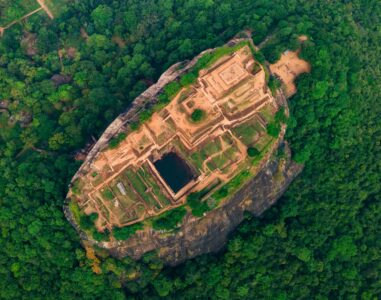
One portion of the site resembles a step pyramid with features similar to those seen throughout Mesoamerica. The site also has had a moat along with ramparts, suggesting the ancient builders wanted to protect the inner structures from outside threats.
On the city’s west side lies another park, and here we find additional signs of advanced ancient engineering. The park contains various water-retaining structures, including a sophisticated hydraulic system that provided water to the gardens.
This unique design was comprised of canals, lakes, dams, and even water pumps, showing that in-depth planning went into the construction of this site. Some of these hydraulic systems still provide water to the area even to this day.
The many structures found on top of the monolithic rock were made from clay bricks. This baffles archaeologists as they struggle to explain how the ancient builders carried an estimated three million bricks to the top of the rock, as there were no signs of any stairways from the ground to the top. The metal stairways present at the site today, were only built in the last century so tourists could visit the site.
Without a proper stairway to the top, it seems an almost impossible task to cart the bricks or the materials to make them up through the thick forest and find a way to the top of the monolithic rock.
While the bricks may seem like an impressive feature of the site, what’s even more interesting is the huge blocks of white marble which make up many of the paths and palace steps of the settlement. The white marble used in construction is not native to the area, and archaeologists are still unsure of where the marble was sourced.
Each of the marble blocks is extremely heavy; some weigh as much as 55 to 66 pounds, and there are thousands of them. So how did these ancient builders get tonnes of heavy marble blocks to the top of the monolithic rock without any stairs?
This has led many people to question the archaeological view of how this ancient city was built. With the modern metal stairs at the site, it can still take up to two hours to get to the top, so how did primitive peoples carry tonnes of materials there without any clear pathway?
Speculations of Advanced Technology
Various archaeologists have noticed strange tool marks which look like narrow channels all along the side of the rock. Archaeologists confirm that these markings were carved in ancient times, yet there is no answer as to how they were carved into the side of the rock at places where there are no slopes for humans to stand. There are also profound, circular holes drilled into the monolithic rock close to its peak. Again archaeologists struggle to explain how these holes were drilled with primitive tools. All of these strange markings look like they were made with some sort of advanced machines that drilled the rock, or even melted it.
However, the most impressive feature of the entire site is not the bricks, marble blocks, or even unusual drill holes. Instead, it is an enormous granite water tank found in the middle of the site.
From a distance, it would appear that this water tank was made from granite blocks. But, as you approach the tank, you realize that it is actually carved into the extremely tough granite rock. The huge tank is 90 feet long, 68 feet wide, and almost 7 feet deep. This means over 3,500 tons of granite would have had to have been removed by hand to create this structure.
Granite is one of the hardest stones on earth. So, if humans of this period had been using primitive chisels, and hammers, it would have taken years to remove. So did ancient workers really grind away for years to hollow out this granite tank, or are we looking at evidence of some kind of advanced technology?
If you visit the site and look at the granite pool, what you will notice is that there are no signs of chisel or hammer marks. Instead, you see long stretches of scoop-like marks that resemble those seen on megalithic sites in Egypt and Peru.
Various scholars have suggested that the ancient builders knew how to manipulate the frequency of rocks, thus making them soft and much easier to transform and carve. Could this be how they removed so much granite from the top of Sigiriya?
An impressive feature of the tank is that it never dries up, not even during the incredibly warmer season in Sri Lanka. Water always stays in the tank, which is an engineering marvel even to us with our modern technology.
The tank appears to collect water through percolation, a process where liquid slowly passes through a filter. But, the tank also has a drainage system underneath, which ensures it never overflows, even during Sri Lanka’s wet monsoon season.
All of these engineering marvels create many unanswered questions concerning the construction of the site of Sigiriya. From various unusual scoop marks on the granite to the vast amount of material required to build the many structures, all indicate that we are looking at a much more ancient site, possibly even one used in pre-diluvian times.
Could Sigiriya be the remnants of a now-lost ancient civilization that perished during a flood or natural catastrophe? Or could this site, high in the sky, have been used as a refuge site during the flood?
Local Legends of Sigiriya
The locals of the surrounding area not only believe this but have legends that suggest this was not only the work of an advanced civilization but of one who came down from the heavens.
As we have already mentioned, there are no signs of ancient steps leading to the top of the structure. But, could we find the answer to questions such as how the ancient builders got to the top of the monolithic rock and how they were able to construct such a site in one of the many caves surrounding the monolithic rock?
Various caves encircle the city of Sigiriya, and within these caves, we find an extensive array of murals and paintings, some covering a surface area of 450 feet. Many of these frescoes show various women, and some are accompanied by celestial beings who appear to be descending from the clouds.
Many researchers have suggested that because there were no stairs, the ancient builders of this site might have possessed antigravity technology and perhaps flying vehicles.
This is an idea that has a parallel in various local traditions of the area. According to legends, the city of Sigiriya was created by a group of deities who descended from the sky. They came to earth and modeled Sigiriya on the abode of their god, Kuvera, who was the god of wealth.
Various other local legends assure visitors that the city of Sigiriya is the palace of Ravana, an ancient God-King of Sri Lanka. The legend also states that the enormous granite tank was the swimming pool of Ravanas and that the oldest portions of the site were also built by him.
According to ancient texts collected from the regions of Sri Lanka and India, Ravana was not born as a normal human, but instead, his ancestors came from the sky. It’s said that Ravana belonged to a race known as the Asura, who were described in the Indian texts as powerful superhuman demigods who came to earth thousands of years ago. Many believe these stories are not just mythology, but ancient historical accounts of otherwordly visitors who came to Earth.
Is it possible that the Asuras were the original builders of Sigiriya? Builders who used advanced forms of technology to lift all of the material required for the city’s construction?
Throughout Hindu mythology, we can find numerous references to Vimanas, which were the flying vehicles the gods used to travel from heaven to earth and around the planet. One of India’s most sacred texts, the Mahabharata, speaks of aerial cities which belonged to the Asuras, the same race of Gods that Ravana belongs to.
Could it be possible that the Asuras used Vimanas to aid in the construction of the city of Sigiriya?
Reptilian Connection to Sigiriya
Some sources claim that the Asuras were hybrid beings, and Ravana himself is sometimes referred to as a reptilian god in Hindu mythology. The city of Sigiriya may hold some of the answers surrounding his true identity. As you enter the site of Sigiriya, you first notice two giant carved feet sitting at the front gate.
The locals refer to these as lions’ claws, but lions have four large claws and one small. The claws in Sigiriya are three, which makes many people to believe that they actually depicted some sort of reptilian creature. Most ancient reptiles had three large toes, and this is precisely what we observe at the entrance of Sigiriya.
Some locals refer to these feet as those of Ravana. Does that mean Ravana was some sort of reptilian humanoid? In some ancient texts, it is claimed that Ravana was not fully human; only his father was. On the other hand, his mother was a completely different species and may have been a reptilian. So, when Ravana was born, it’s said he was of a hybrid species.
Some have even suggested a link between Ravana and the Nephilim giants mentioned in the ancient Christian and Hebrew texts. Ravana was known to have various human features, but others were unlike any average human. It’s well known that Ravana was at least ten feet tall, and some of the more interesting features included his ability to shape-shift and deceive others by doing so.
This is a prevalent theme among those who were deemed reptilian. Another feature Ravana possessed was his ability to become almost invisible by blending with the surrounding environment. Clues of Ravana’s reptilian appearance can be found in all ancient texts. One text, known as the Ramakien, clearly states that Ravana had green lizard-like skin.
Even in modern times, various reptiles, including snakes, are named after the reptilian king Ravana. According to the ancient Tamil and Sinhala texts, the original inhabitants of Sri Lanka were a race of beings known as the Naga. Naga is the modern word for snake, but according to these ancient texts, Naga was the name of these reptilian hybrid beings who were eventually forced to live underground, and some believe are still living there to this day.
Pondering Sigiriya's Origins
The more you research the ancient texts, the stranger the stories about Sri Lanka and Sigiriya become.
What do you think about the site of Sigiriya? Was it somehow built by primitive humans with basic tools, or is there more to the story? Could human beings, without any advanced technology, have carried over three million bricks of marble blocks to the top of the rock while also cutting out three and a half tones of granite and removing it from the site without any stairs?
Do you think conventional archaeologists were wrong to ascribe this site to builders in the 5th century? Should they instead embrace the idea that ancient builders with an unknown form of advanced technology are the original inhabitants of this site? And could it even have been built by Ravana or his extraterrestrial race known as the Asura?
Is it possible that the site of Sigiriya was the home to an advanced group of reptilian gods who possessed technology far beyond their human counterparts? And did these Asura come down from the sky to intermingle with human beings and change the course of our history, just as all ancient texts convey?

